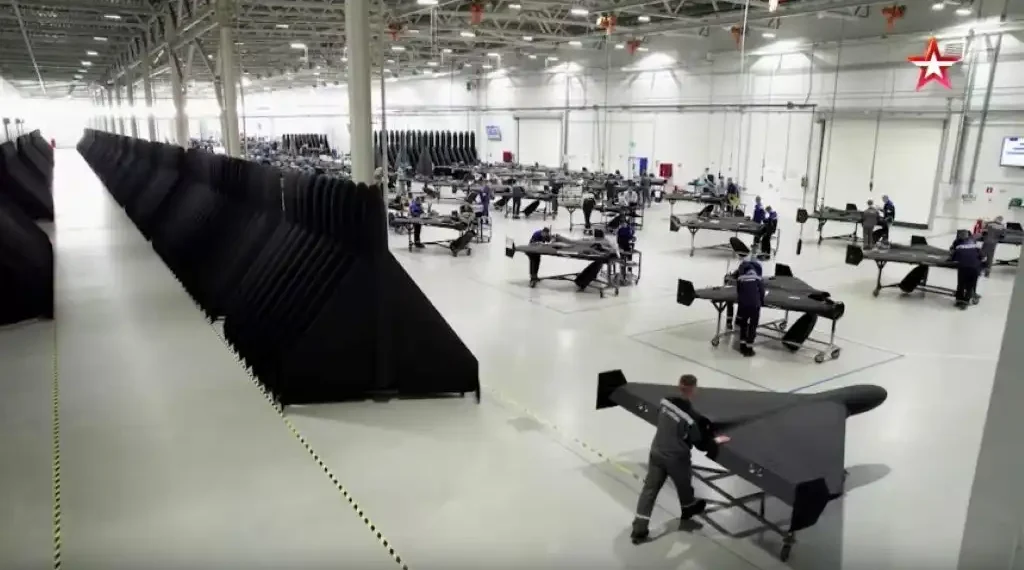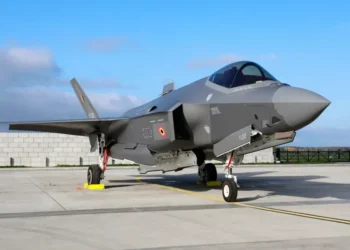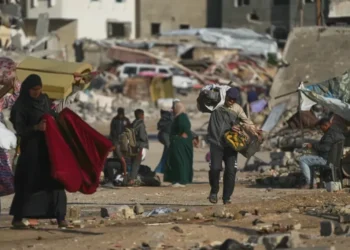Russia’s Drone Factory Expansion Redefines Partnership with Iran Over Shahed-136 Production
Published Time: 08-09-2025, 14:00 (U.S. Eastern Time)
Russia has built a large-scale drone manufacturing facility in Alabuga, Tatarstan, that now produces the Iranian-designed Shahed-136 drones almost entirely domestically. This development marks a significant shift in military-industrial collaboration between Moscow and Tehran, with analysts noting a growing rift as Russia increasingly sidelines Iran in production and control over the weapon.
Russia’s drone war effort in Ukraine has heavily relied on the Shahed-136 drone, originally developed in Iran. But recent reports show Moscow is no longer dependent on Iranian imports and is instead scaling up local production at the Alabuga facility, integrating nearly all manufacturing stages into Russia’s military industrial complex.
Alabuga: Russia’s Drone Production Powerhouse
Located about 600 miles east of Moscow, the Alabuga factory specializes in the mass production of drones based on the Shahed-136 design. As featured in a recent Russian TV documentary, the facility has achieved near-complete localization of components. CEO Timur Shagivaleev described how aluminum bars, carbon fiber, fiberglass, microelectronics, and two-stroke engines are now all produced onsite.
According to Western intelligence sources, about 90% of the drone manufacturing process now takes place at Alabuga and other Russian plants. This shift not only accelerates output but reduces costs significantly, with the price per drone reportedly falling from $200,000 in 2022 to approximately $70,000 in 2025.
Satellite imagery shows the factory expanding rapidly, with new production lines and staff dormitories indicating a planned surge in drone output. Some analysts believe Russia may eventually export upgraded versions of these drones, possibly even back to Iran.
Strained Relations: Tehran’s Growing Discontent
Despite their initial partnership, Iranian officials have grown increasingly frustrated with what they see as Moscow’s transactional approach and limited returns from cooperation. Tehran has supplied Russia with drones, missiles, and other military assets since the invasion of Ukraine, but Western intelligence sources suggest Russia’s expanding self-sufficiency has marginalized Iran’s role.
The tension became more apparent during Israel’s June 2025 bombing campaign targeting Iran’s nuclear facilities, where Russia’s muted condemnation disappointed Tehran. Ali Akbar Dareini of Tehran’s Center for Strategic Studies noted Iran’s expectations for more robust Russian support have not been met, especially on the military and intelligence fronts.
Western analysts interpret Russia’s stance as purely pragmatic—engaging partners only as long as it suits their immediate interests, without deeper strategic commitment.
The $1.75 Billion Deal and Rapid Production Gains
Following the invasion’s onset, Russia inked a $1.75 billion deal with Iran to produce Shahed drones domestically. Initially slated to deliver 6,000 drones by September 2025, Russian factories surpassed this goal a year ahead of schedule, now churning out over 5,500 units monthly.
Ukraine’s Defense Intelligence has noted significant improvements in the drones’ technology, including enhanced communication systems, longer battery life, and larger warheads, making them deadlier and more challenging to intercept.
Loss of Iranian Control Over Shahed Drones
Experts highlight that Moscow’s localization of drone production undermines Iran’s control over the weapon’s design and manufacturing. The Western intelligence official CNN interviewed described this as a gradual “loss of control” for Tehran and suggested Russia aims to master the entire production cycle independently to avoid future reliance on Iranian cooperation.
Dareini echoed this sentiment, framing the Russia-Iran partnership as a blend of cooperation and competition, with both nations seeking to maximize their benefits.
Economic and Sanctions Challenges Impact Cooperation
Iranian companies involved in the drone production partnership, such as Sahara Thunder, have reportedly raised concerns about delayed payments and logistical hurdles, exacerbated by international sanctions constraining the Russian economy.
This economic friction adds to Tehran’s frustration, especially as promised transfers of Russian aeronautical technology have yet to materialize fully.
Potential for Renewed Military Support to Iran
Following a ceasefire with Israel, Iran is focused on rebuilding its military infrastructure. David Albright, a former UN weapons inspector and head of the Institute for Science and International Security, suggests Russia’s expanded drone production capacity at Alabuga could allow Moscow to supply updated Shahed drones back to Tehran.
Albright warned of the dangers posed by Iran potentially reverse-engineering improved drone technology from Russia, which could further destabilize regional security.
Additional Military Equipment Transfers
Open-source flight tracking indicates military cargo flights between Moscow and Tehran, including a recent trip by a Russian IL-76 transport aircraft. Though unconfirmed, Iranian reports suggest the shipment may have included components of the Russian S-400 air defense system.
Requests for comment from the Russian Ministry of Defense and Iranian government offices have not been answered.
Conclusion: A Complex but Enduring Partnership
While tensions between Moscow and Tehran are evident, analysts like Dareini believe Iran will ultimately continue to benefit from the military and technological cooperation. Despite disagreements, the relationship remains a vital strategic partnership for both countries amid shifting global alignments.
“Iran will get what it needs for its own security,” Dareini said, citing military hardware, economic collaboration, and technology transfers as ongoing pillars of their alliance.
This article was rewritten by JournosNews.com based on verified reporting from trusted sources. The content has been independently reviewed, fact-checked, and edited for accuracy, neutrality, tone, and global readability in accordance with Google News and AdSense standards.
All opinions, quotes, or statements from contributors, experts, or sourced organizations do not necessarily reflect the views of JournosNews.com. JournosNews.com maintains full editorial independence from any external funders, sponsors, or organizations.
Stay informed with JournosNews.com — your trusted source for verified global reporting and in-depth analysis. Follow us on Google News, BlueSky, and X for real-time updates.













